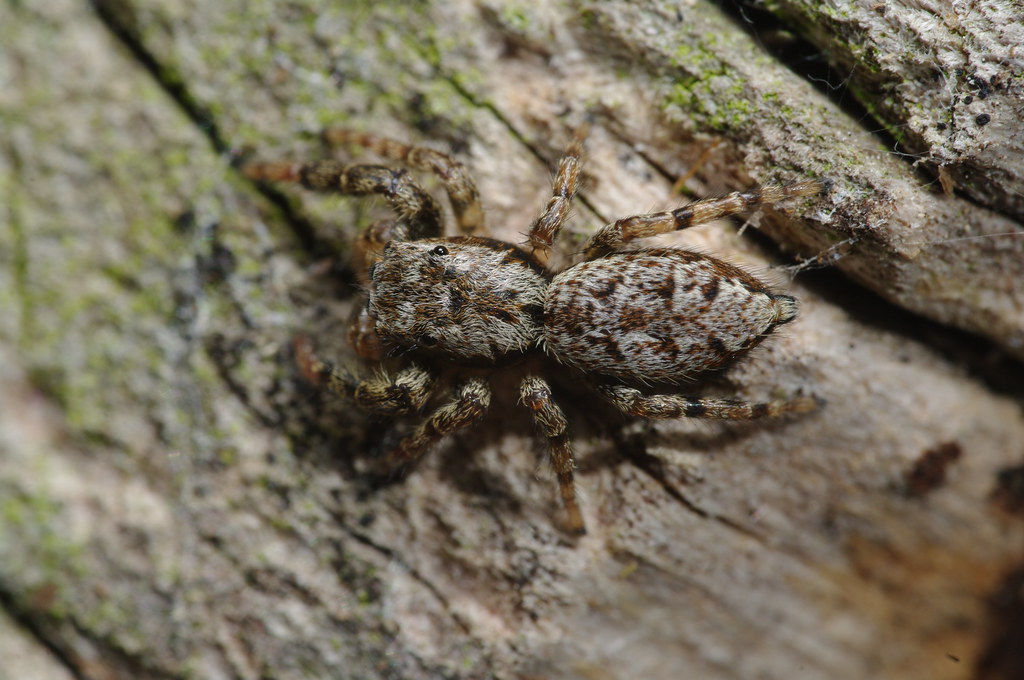January is generally a pretty bleak month for insect hunting, so it was a pleasant surprise to find a lovely little jumping spider (yes I know they're not insects!) roaming around the office earlier this week. Jumping spiders, or the
Salticidae to give them their proper title, are the most diverse family of spiders, with around 5000 species being recorded world-wide. My little friend from the office turned out to be
Pseudeuophrys lanigera, which seems to be lacking a common name despite being a common and frequently seen species due to its association with buildings.
 |
| Pseudeuophrys lanigera, showing highly developed front eyes |
Jumping spiders are active hunters, tracking potential prey with their excellent vision, before pouncing with an agile leap and subduing the unfortunate target. The importance of accurately judging their jumps has lead to the enlargement of four of their eight eyes, with the front two in particular being proportionately far larger than in most spiders. These large eyes make jumping spiders instantly recognisable, and lend them a rather more gentle countenance than the average arachnid. Despite their cuddly features jumpers are capable of capturing prey several times the size of the spider, with powerful venom ensuring that any resistance is brief.
 |
| Zebra jumping spider with micro moth prey |
The most commonly encountered species in the UK is the zebra jumping spider, which can be found on almost any warm surface in summer. The latin name,
Salticus scenicus, translates to 'theatrical jumper'. This refers to the remarkable awareness and apparent curiosity of these tiny spiders towards humans. Move close to a zebra jumper and it will usually turn to face you, raising its head to get a better view.
There are around 40 species in the UK, ranging from common and widespread species such as those already mentioned, to
Sitticus distinguendus, found on just two sites in the Thames gateway. A short selection of some of the species I've been fortunate enough to encounter and photograph is shown below.
 |
| The beautifully marked Evarcha falcata, a common and widespread species |
 |
| A plump female Sitticus pubescens, widespread but only locally common |
 |
| A tiny male Talavera aequipes, at 2mm long this is one of the smallest UK species |
 |
| Marpissa muscosa, at around 8mm long this is one of the largest UK jumpers, and four times the length of T.aequipes. The distinctively elongated abdomen is a feature of the genus. |
 |
| Heliophanus flavipes female, showing the diagnostic yellow palps for which it is named. |






